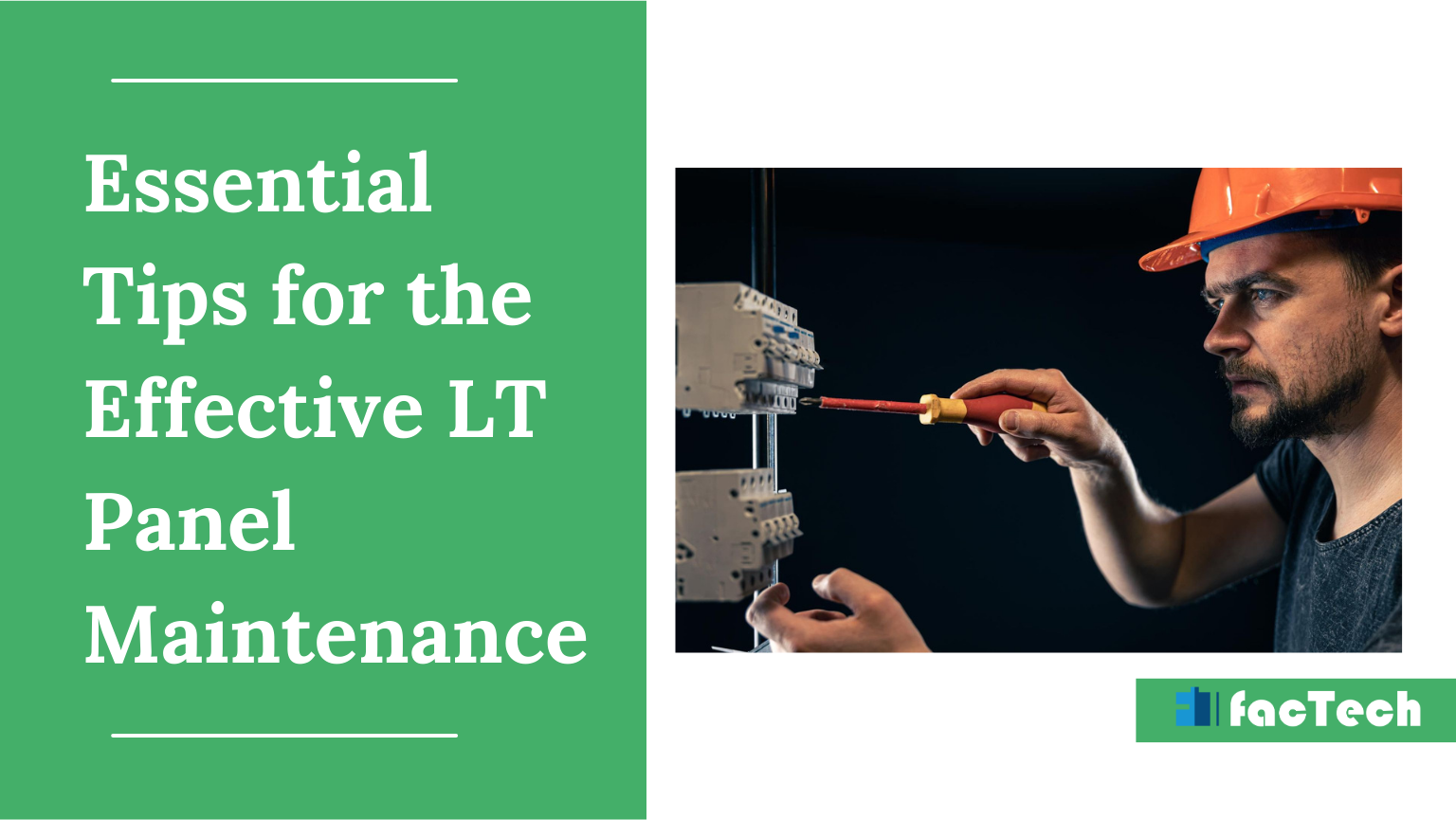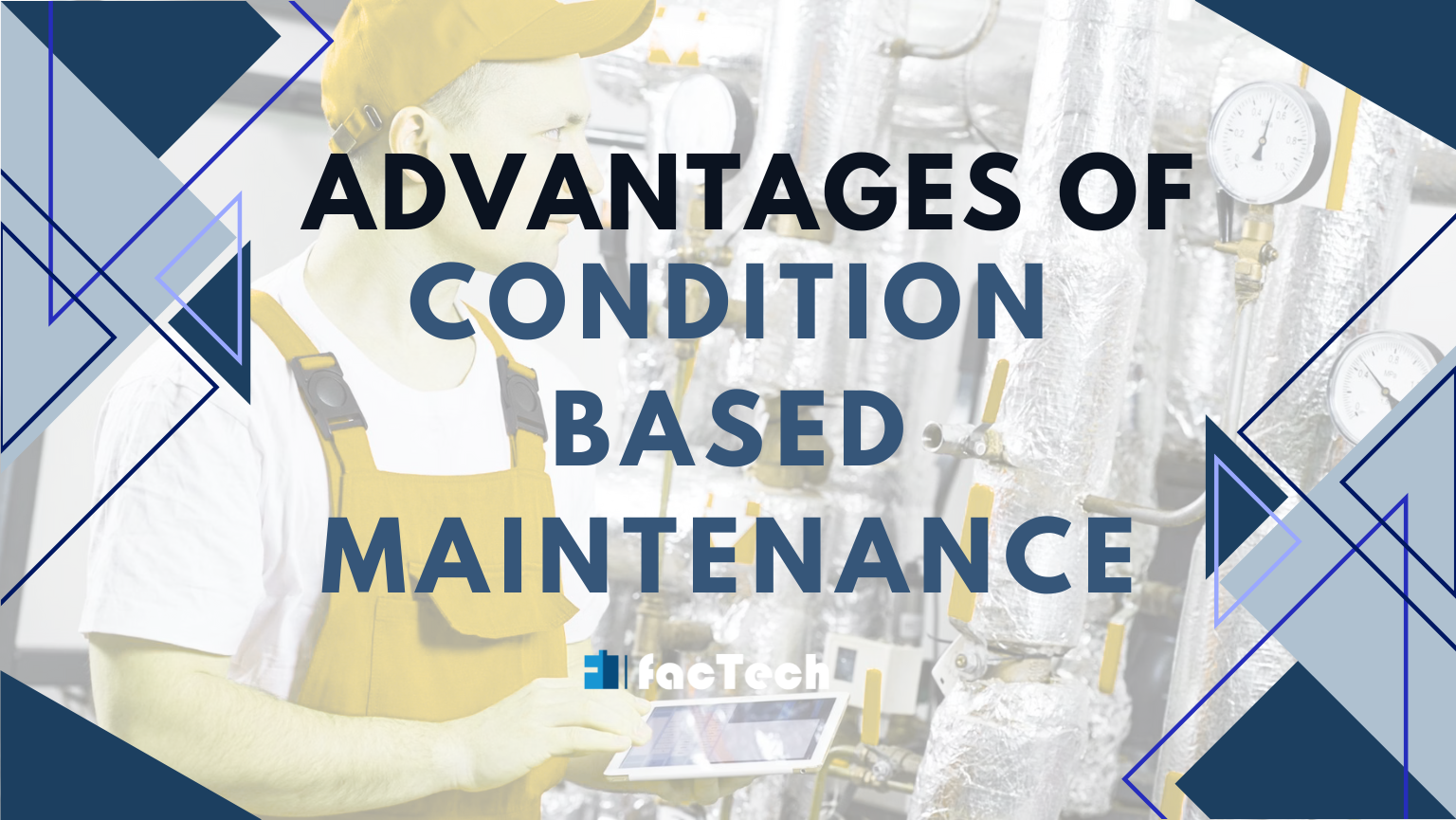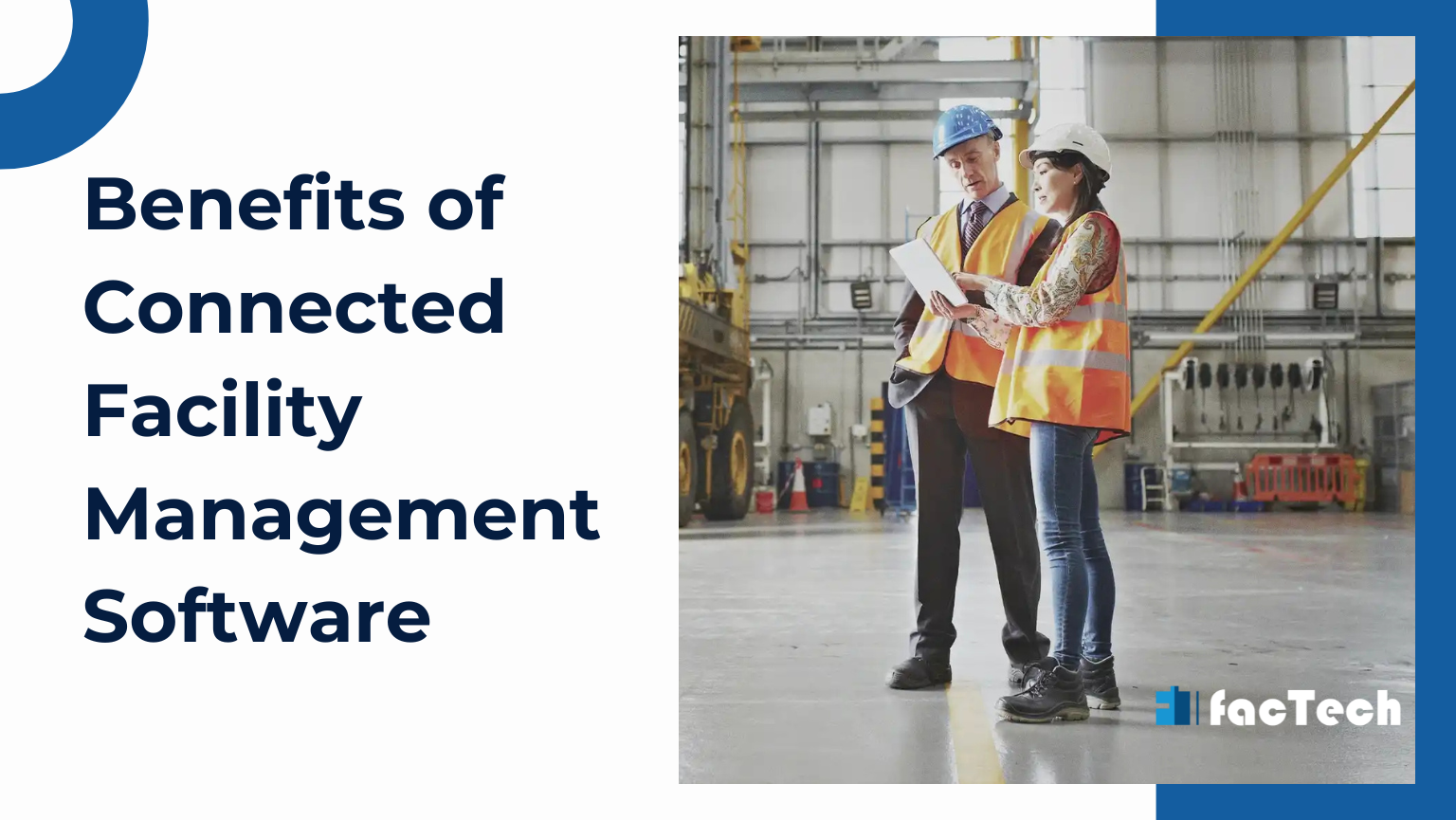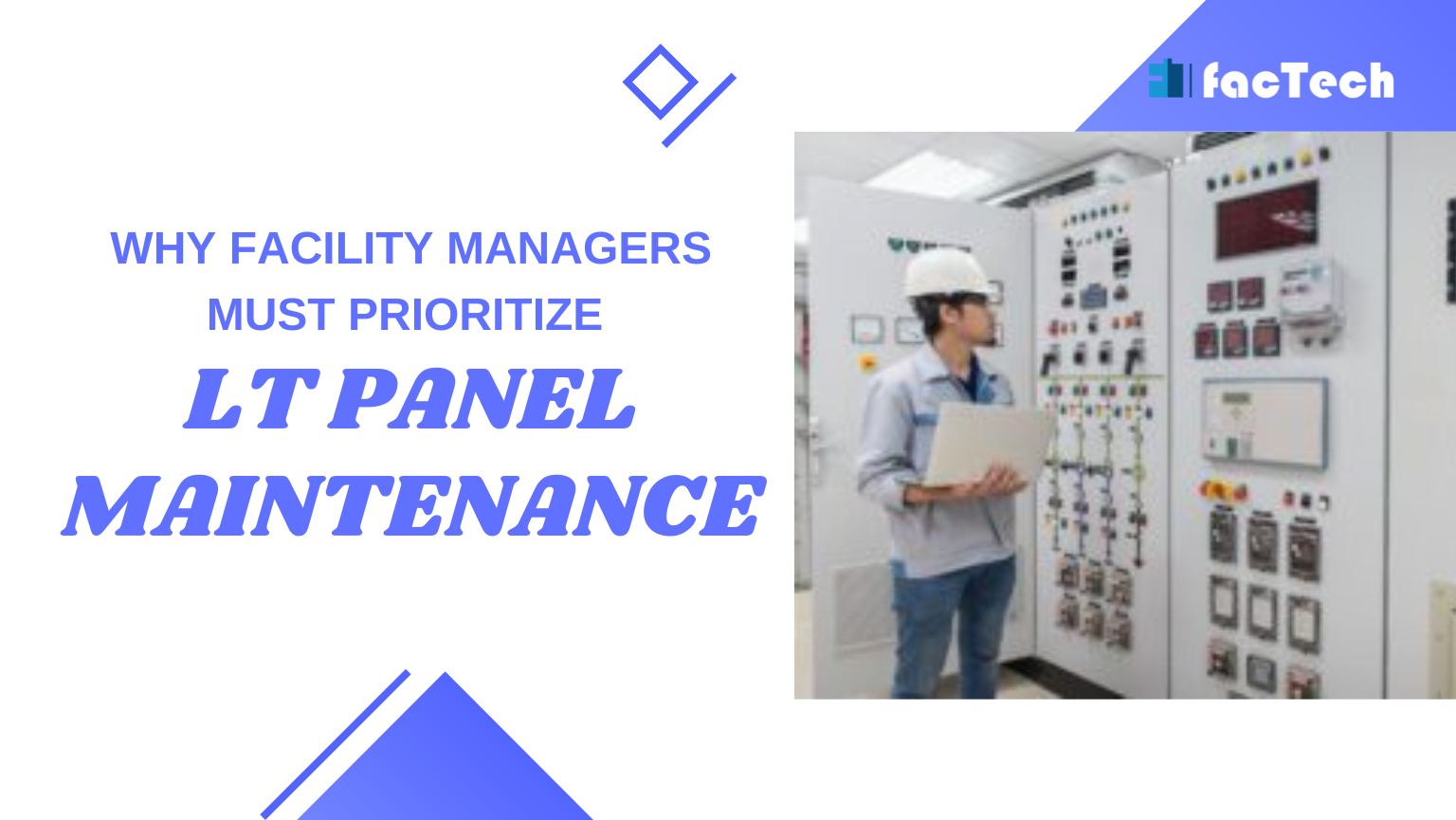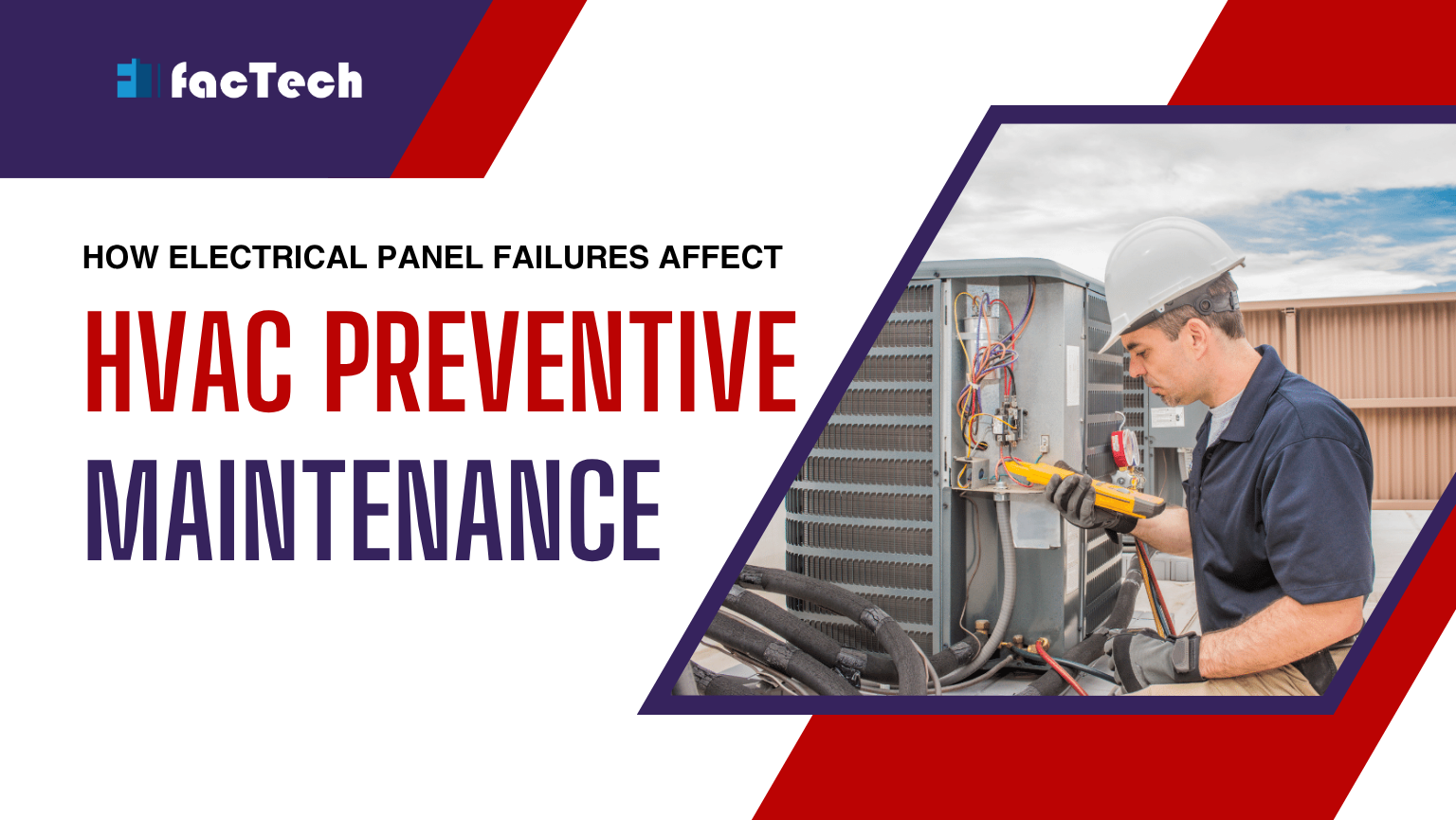Essential Tips for the Effective LT Panel Maintenance
Low-Tension (LT) panels are rather important in the electrical realm. Any electrical distribution system, in industrial, commercial, and even big residential environments, is built on them. Essential for running machinery, lights, HVAC systems, and more. LT panels handle and distribute electricity at voltages less than 1,000 volts. Frequent maintenance of LT panels ensure consistent power distribution, therefore enabling companies to remain profitable and prevent expensive downtimes.
Maintenance of LT panels is sometimes disregarded in today’s companies. Ignoring routine inspections and maintenance, however, can cause major issues like safety concerns, equipment damage, and electrical breakdowns. The aim of this blog is to investigate the reasons behind the need for LT panel maintenance as well as how to correctly maintain these vital parts to ensure seamless operations and improved safety.

What is an LT Panel?
Usually used for a variety of mechanical equipment, LT panels are mostly meant to effectively distribute and control electricity. Built from premium raw materials, these panels follow exact industrial quality guidelines.
Applications for LT control panels abound in the industrial and commercial sectors: commercial buildings, industries, big solar farms, pharmaceuticals, hospitals, dairy products, telecommunication networks, research labs, and others.

Typical Issues Involving LT Panels
LT panels could run across many problems over time that would compromise their performance. The most often occurring issues seen with LT panels are as follows:
1. Should Avoid Overheating
Any LT panel should provide great attention to overheating. High electrical loads or inadequate airflow could cause components within panels to overheat. In extreme circumstances, overheating can start electrical fires; it can also compromise the insulation around wires and raise the chances of short circuits. By employing regular maintenance, addressing overheating helps avoid such issues from getting worse.
2. Inaccurate Links
Inside LT panels, loose or corroded connections can cause power losses and raise arcing risk. When currents leap across gaps between conductors, heat is produced and a fire risk is raised. Frequent maintenance—which includes checking and tightening connections—helps prevent harmful arcing and guarantees steady power distribution.
3. Accumulate Dust and Moisture
Installed in demanding or humid conditions, LT panels may gather moisture, dust, or even corrosive particles. While dust can obstruct airflow and contribute to panel overheating, moisture can cause rusting and corrosion of electrical components. Prevention of these issues and prolongation of the life of the electrical equipment depend on regular cleaning and panel sealing.

Tips for LT Panel Maintenance
Create a Planned Maintenance Schedule
Preventive maintenance mostly consists of developing and following a consistent maintenance schedule. Routine inspections, cleaning, and interval-based testing are part of this procedure. A well-documented calendar helps spot possible problems early on and keeps them from developing into expensive mistakes. Track and set aside inspections using a maintenance management system. It guarantees that none of the maintenance chores are overlooked and maintains a log of all the operations for future reference.
Regularly Clean Panels and Components
Over time; dust, grime, and trash can build up inside control panels, causing overheating, electrical shorts, and component breakdown. Maintaining correct airflow and avoiding these problems depend on regular cleaning.
Verify Electrical Connections
Loose or corroded electrical connections can lead to overheating, voltage decrease, or perhaps total system failure. Reliable performance comes from regular inspection and connection tightening.
Monitor and Control Temperature.
Typical causes of control panel failures are too much heat. Maintaining the lifetime of components depends on correct ventilation and cooling.
Also, read How HVAC Preventive Maintenance Can Save Energy?
Test and Replace Aging Components
Many components—relays, connectors, circuit breakers—that can degrade with time. Frequent testing and quick replacement of worn-out parts guarantee the system keeps running as it should.
Guard Panels Against Environmental Hazards
Control panel performance can be much influenced by environmental elements, including moisture, dust, and corrosive substances. Correct sealing techniques and enclosures help to guard panels against such risks.
Perform Regular Functional Testing
Functional testing guarantees desired control panel performance. This covers testing of every circuit, switch, and communication link.
Keep Correct Documentation.
Record all maintenance activities—including inspections, repairs, and component replacements—very precisely. Future troubleshooting will benefit much from this material, which also guarantees industry standards’ compliance.
Following these preventative maintenance guidelines will help you to greatly increase the lifetime of your control panels, lower unplanned breakdowns, and preserve best system performance.

How does the Factech Maintenance System help in LT Panel Maintenance?
The Factech maintenance system tracks component status, logs maintenance activity, and offers a unified platform for scheduling regular inspections, therefore streamlining LT panel maintenance. By means of automatic reminders and condition monitoring, it promotes proactive maintenance, therefore lowering the risk of unplanned failures and breakdowns. With fast logging, assignment to specialists, and progress tracking—which guarantees timely repairs—the system also helps to effectively manage faults. Moreover, it offers insightful analysis based on maintenance records and statistics that enables well-informed replacements and upgrades required, hence extending the lifetime and dependability of LT panels.
The bottom line
One cannot overemphasize the need for LT panel maintenance. Reliable power distribution, more energy efficiency, and improved safety for people and property depend on a well-maintaining LT panel. Any company that depends on continuous power for its operations should smartly engage in preventative LT panel repair. Regular maintenance is the secret of keeping your electrical infrastructure functionally smooth and effective; don’t wait till a system fails. Contact us to get a free demo.
FAQs
Q.1 What is an LT panel, and where is it used?
Typically at voltages less than 1,000 volts, an LT (Low Tension) panel is a type of electrical distribution board used in industrial, commercial, and big residential environments to control and distribute power.
Q.2 What are the indicators that my LT panel requires maintenance?
Overheating, flickering lights, loose connections, visible wear and tear on components, and peculiar noises are common indicators.
Q.3 What is the recommended frequency of maintenance for LT panels?
In more demanding environments, in every six months maintenance is necessary, but LT panels should be maintained at least once a year.
Q.4 Can the improper maintenance of LT panels result in significant hazards?
Yes, the negligence of LT panel maintenance can result in electrical failures, fires, and safety hazards, including arc flashes and electrical shocks.
